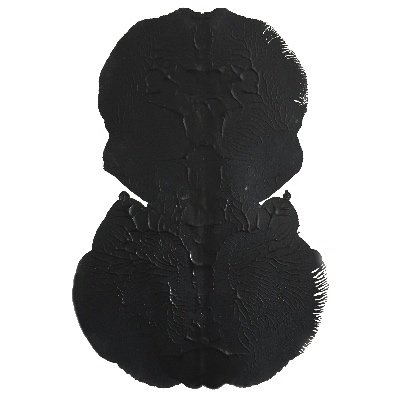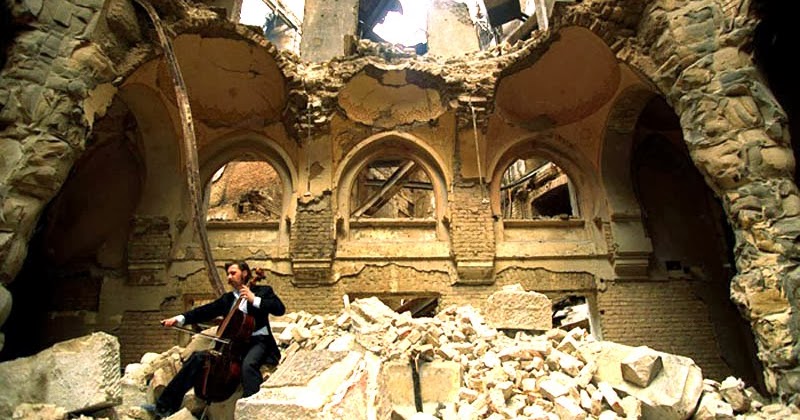The Cellist of Sarajevo
I recently read The Cellist of Sarajevo by Steven Galloway. It is a relatively short book set in the 1990s Siege of Sarajevo. The premise pivots on a cellist who plays the Adagio by Albinoni for 22 days in a row to honor the 22 people who died in a bombing while waiting for bread. The book follows 3 separate people through their life at that time, who do not directly interact with the cellist or each other, but who are deeply affected by what he does; a female sniper tasked with keeping him alive, a bread maker whose family has escaped the city, and a father who must travel through the city to get fresh water for his family.
From Goodreads:
This brilliant novel…tells the story of three people trying to survive in a city rife with the extreme fear of desperate times, and of the sorrowing cellist who plays undaunted in their midst.
One day a shell lands in a bread line and kills twenty-two people as the cellist watches from a window in his flat. He vows to sit in the hollow where the mortar fell and play Albinoni’s Adagio once a day for each of the twenty-two victims. The Adagio had been re-created from a fragment after the only extant score was firebombed in the Dresden Music Library, but the fact that it had been rebuilt by a different composer into something new and worthwhile gives the cellist hope.
Meanwhile, Kenan steels himself for his weekly walk through the dangerous streets to collect water for his family on the other side of town, and Dragan, a man Kenan doesn’t know, tries to make his way towards the source of the free meal he knows is waiting. Both men are almost paralyzed with fear, uncertain when the next shot will land on the bridges or streets they must cross, unwilling to talk to their old friends of what life was once like before divisions were unleashed on their city. Then there is “Arrow,” the pseudonymous name of a gifted female sniper, who is asked to protect the cellist from a hidden shooter who is out to kill him as he plays his memorial to the victims.
Perhaps because I was a child when the siege occurred, I was a little (read very) hazy on the details of this tragedy. While reading this book, I had to dig up some of the facts and history of what actually happened in order to make sense of such a travesty.
Owlcation did a pretty good job of summing up some of the facts:
Starting in 1992, the city of Sarajevo, capital of the Republic of Bosnia and Herzegovina, came under siege and was subjected to daily shelling and sniper attacks from Serbian forces in and around the city. The siege lasted from April 6, 1992 to February 29, 1996, the longest siege in modern history-- a year longer even than the Siege of Leningrad during World War Two.
When Yugoslavia's leader Marshal Tito died in 1980, the country's constituent ethnic and religious groups began vying for control. Some wanted independence; some wanted Yugoslavia to continue-- though under their control.
After the Republic of Bosnia and Herzegovina (hereafter referred to as “Bosnia”) declared its independence on March 3, 1992, Serbia, along with Bosnian Serbs and, initially, Croatia, prepared for war and sporadic fighting broke out in parts of Bosnia. As tensions mounted, 40,000 Bosnians, Serbs and Croats from all over Bosnia demonstrated for peace in Sarajevo on April 6, 1992, the same day that members of the European Union recognized Bosnia as an independent state. This show of ethnic unity angered Serb nationalists who fired into the crowd. This was considered the start of the Siege of Sarajevo.
Serbs and Bosnian Serbs held positions inside the city, including the airport, as well as in the surrounding hills. By May 2, the entire city was surrounded. They cut off supplies, including food and medicine, as well as water, electricity and heating fuel. Though equipped with superior weaponry and fully supplied, the Serbs were outnumbered by the city's defenders who were armed with anti-tank weapons and were able to stop the attacking armored columns. Faced with this standoff, the Serbs decided to lay waste to the city with their artillery and terrorize the population with sniper attacks.
Serbs and Bosnian Serbs held positions inside the city, including the airport, as well as in the surrounding hills. By May 2, the entire city was surrounded. They cut off supplies, including food and medicine, as well as water, electricity and heating fuel. Though equipped with superior weaponry and fully supplied, the Serbs were outnumbered by the city's defenders who were armed with anti-tank weapons and were able to stop the attacking armored columns. Faced with this standoff, the Serbs decided to lay waste to the city with their artillery and terrorize the population with sniper attacks.
This fictionalized telling of an actual occurrence painted a horrific scene. Kenan’s trek through the city to get water for his family is harrowing and the dreaming of simple luxuries that we take for granted, like shaving, consistent electricity, running water, being able to laugh carefree and spend time with friends carves such a bleak picture of the reality of the situation. I could not believe, reading this book and reading about the Siege, that this happened during my lifetime (and I’m not THAT old).
The Cellist of Sarajevo
While this is a work of fiction, the book is based on a real cellist, Vedran Smailović, of the Sarajevo Philharmonic Orchestra, who played outdoors in the ruins of the city and at funerals regardless of the constant threat of snipers and shellfire. I did not realize that composer David Wilde wrote a piece for solo cello called The Cellist of Sarajevo in his honor. Steven Galloway notes that Smailović managed to escape Sarajevo in 1993 and now resides in Northern Ireland.
Albinoni’s Adagio in G
Here’s a brief what’s what from Wikipedia:
The Adagio in G minor for violin, strings, and organ continuo is a neo-Baroque composition popularly attributed to the 18th-century Venetian master Tomaso Albinoni, but actually composed by 20th-century musicologist and Albinoni biographer Remo Giazotto, purportedly based on the discovery of a manuscript fragment by Albinoni.
The composition is often referred to as "Albinoni's Adagio" or "Adagio in G minor by Albinoni, arranged by Giazotto." The ascription to Albinoni rests upon Giazotto's purported discovery of a manuscript fragment from a slow second movement of an otherwise unknown Albinoni trio sonata.
According to Giazotto, he obtained the document shortly after the end of World War II from the Saxon State Library in Dresden which had preserved most of its collection, though its buildings were destroyed in the bombing raids of February and March 1945 by the British and American Air Forces. Giazotto concluded that the manuscript fragment was a portion of a church sonata in G minor composed by Albinoni, possibly as part of his Op. 4 set, around 1708.
I lamely wasn’t sure if I knew this piece when I read the title, but when I looked it up it was one of those “oh duh of course I know this piece” moments. If you’re like me, and don’t recognize the title take a listen and I’m pretty confident you’ll recognize it.
Back to the Book
The cellist’s actions are questioned in the book, Arrow, is sent to protect him from assassination, the International media covers the performance, and Smailović is (still) seen as a global humanitarian hero. One of the characters in the book points out how the performance seems frivolous in the face of such danger and bleak conditions, until he witnesses his playing. Smailović plays at 4pm everyday for 22 days in a row and more and more people come to witness his memorial to the city.
I finished this book a few weeks ago and didn’t shed a tear, but it continues to weigh on me. I keep thinking about the living conditions of the residents of the city, losing loved ones and neighbors everyday, living in constant fear and the power of music to express something that is so hard to put into words. Something that captures the attention of the whole world, but touches deeply the people immediately surrounding the bombing and the city. How even the sniper sent to kill him (in the book) cannot help but put his gun down and listen to the performance. How Arrow considers it her most important mission yet, to keep the cellist alive.
I’m not one to wax lyrical about “the power of music” but truly there is something to it. Just like when Rostropovich played at the Berlin Wall, and now Yo Yo Ma is doing at the Mexico border, music does form a bridge that connects disparate parts. You don’t have to analyze the performance, the piece, the historical accuracy, or the acoustics, you just have to be present for the experience. Does it change anything quantifiable? Who knows. But is that really the point? Are you supposed to make a spreadsheet every time you hear something that moves you deeply? (god, I hope not).
This review was written simply because I could not thinking about this book. Below are links to the sheet music and the book If you’re interested in obtaining a copy for yourself.
 look inside
look inside
|
Adagio in G Minor Composed by Tomaso Giovanni Albinoni (1671-1751). Edited by Werner Thomas-Mifune. Cello & Piano. Baroque. Instrumental solo book. With bowings and fingerings. 6 pages. Edition Kunzelmann #GM1670. Published by Edition Kunzelmann (PE.GM1670). |


